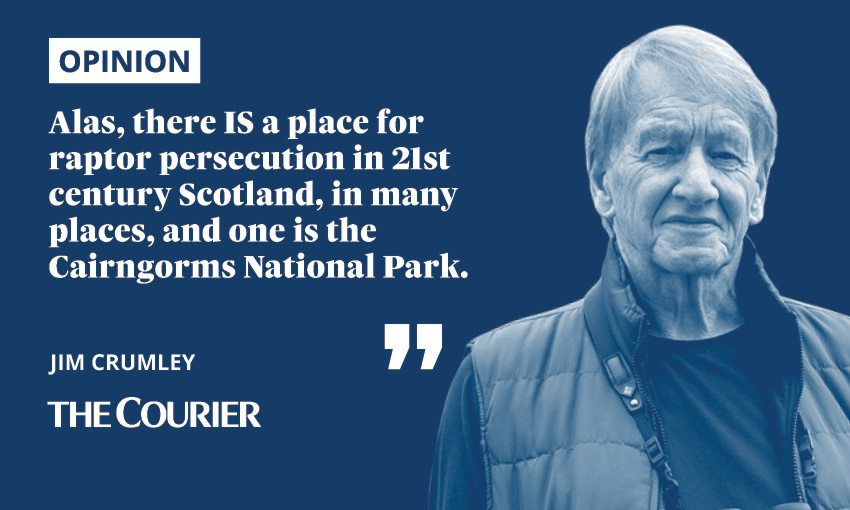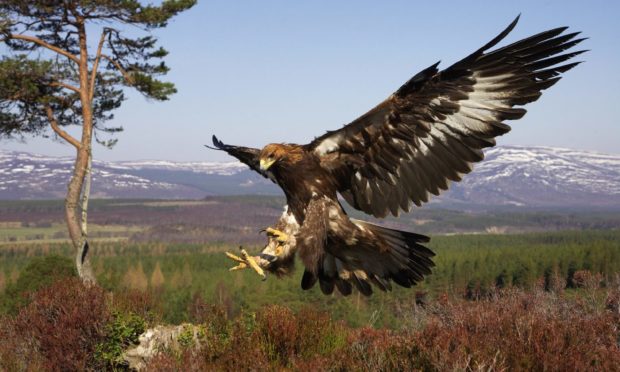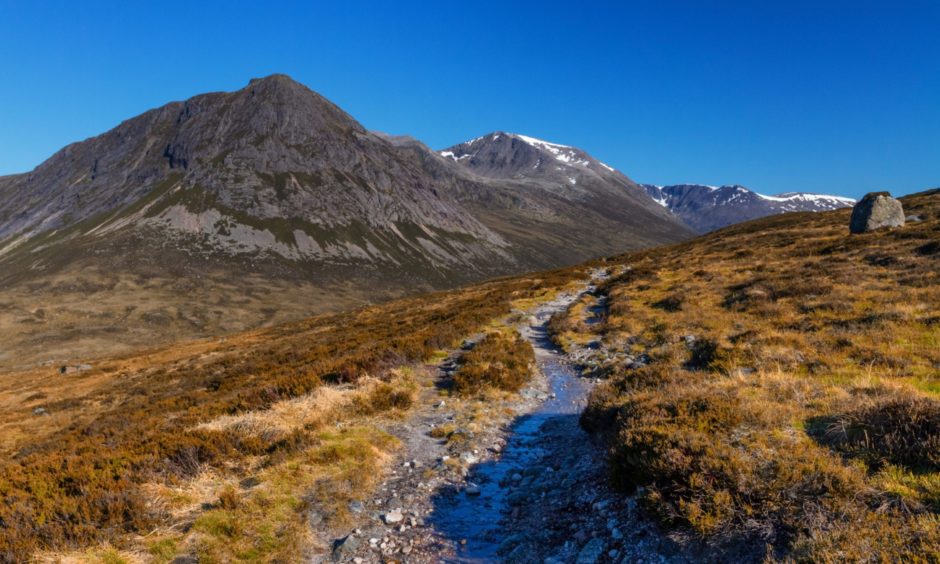There is a job of some urgency for the new Environment Secretary at Holyrood.
You may have read about the golden eagle found poisoned at Invercauld estate in the Cairngorms National Park.
The guiding principles for a national park should centre around the wellbeing of the landscape and its ecology. Nothing else. Otherwise, why bother to have a national park at all?
But what Scotland has instead is two national parks obsessed by tourism and the rural economy.

As it happens, I have just been reading a book called “A Life in Nature”, a collection of writings by Peter Scott, founder of the Wildfowl and Wetlands Trust and the Worldwide Fund for Nature. He wrote this:
“For conserving wildlife and wilderness there are three categories of reason: ethical, aesthetic, and economic, with the last one (at belly level) lagging far behind the other two.”
And this:
“Conservationists today are involved in a gigantic holding operation – a modern Noah’s Ark to save what is left of the wildlife and wild places, until the tide of new thinking begins to flow all over the world.”
Long wait for tide to turn
He wrote that 60 years ago.
But because I read it at the same time as Nicola Sturgeon’s astonishing election achievement was playing out, I began to think that there is an opportunity right here, right now.
If we are on a tide of new thinking, it has never been more important that the Scottish Government appoints an Environment Secretary with a radical agenda.
And please don’t let Fergus Ewing anywhere near it, because he is far too chummy with the Scottish Gamekeepers Association.
The golden eagle found poisoned at Invercauld this spring is the latest in a breathtaking catalogue of around 80 crimes against wildlife in the national park’s young life
The first thing I think the new Environment Secretary should do is to familiarise himself or herself with the track record of the Cairngorms National Park in conserving wildness and wildlife, and then to consider how the land within the park is managed.
The result of that familiarising process should be cause for a great deal of concern for the new Environment Secretary.
If it isn’t, the Scottish Government will have appointed the wrong person, because the golden eagle found poisoned at Invercauld this spring is but the latest in a breath-taking catalogue of around 80 crimes against wildlife in the national park’s young life (it was established in 2003).
Our reaction to the distressing news of the recent poisoning of a golden eagle https://t.co/HE61iY1XeG Anyone with any info on this or any other wildlife crime is asked to call @policescotland on 101.
— NatureScot (@nature_scot) May 7, 2021
Twelve golden and white-tailed eagles have been killed in that time along with 24 buzzards; and 10 hen harriers in the last five years alone.
A sea eagle nest tree was deliberately felled and nests of peregrine and goshawk were destroyed.
All that inside the national park, in the last 18 years, and all of these birds have the highest level of legal protection,
Victorian values
That alone should be enough to persuade the new Environment Secretary that the situation calls for new thinking.
The estates’ attitudes towards birds of prey are symptomatic of a far wider contempt for those species of nature which they judge to be inconvenient for what remains a depressingly Victorian attitude to land and wildlife.
The Cairngorms National Park Authority’s response to the eagle-killing was dismal. A statement on its website says: “The CPNA condemns this senseless and irresponsible behaviour and condemns it in the strongest possible terms. Raptor persecution has no place in 21st century Scotland and no place in this national park.”
How can you revere a landscape when the principal management tools of its private owners are fire and guns and poisons, burning the land, killing the wildlife?
No, it doesn’t condemn it in the strongest possible terms.
If it had done, the park authority would be screaming down the phone to the Scottish Parliament that grouse moor and deer forest should have no place in 21st century Scotland or inside the national park.
They are completely incompatible with thoughtful conservation of a landscape that should be revered for its wildlife and wild landscape.
How can you revere a landscape when the principal management tools of its private owners are fire and guns and poisons, burning the land, killing the wildlife. And why aren’t national parks owned by the nation?
That might have amounted to something like the strongest possible terms.
The other problem with the park authority’s statement is that, alas, there IS a place for raptor persecution in 21st century Scotland, in many places, and one is the Cairngorms National Park.
Reality doesn’t match ambition
The first words you read on the home page of the Cairngorms National Park Authority website are these: “An outstanding national park, where people and nature thrive together.”
It is a very worthwhile ambition, but it is a long way from the reality on the ground.
The new Environment Secretary might also like to consider that one of the reasons for such a toll of wildlife is that as things stand, the estates know they will almost certainly get away with it, for there are hardly ever prosecutions.
If our newly-elected government wants to project the image of a forward-thinking independent Scotland on the European stage – and I sincerely hope it does given my lilac and yellow votes for the SNP – then the tide of new thinking should perhaps begin by blowing away that embarrassing Victorian stain from the face of the land.


